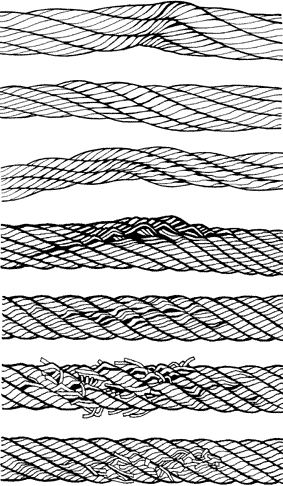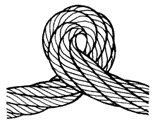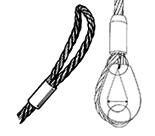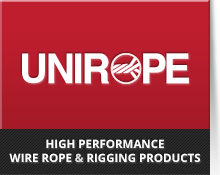Sling Removal Criteria
If required UNIROPE® provides ON SITE INSPECTION SERVICE. Our factory trained inspection personnel will provide you with a full WRITTEN inspection report and a complete LISTING of all inspected slings in service at your plant or construction site. Where necessary we will proof-load the slings and issue a PROOF TEST CERTIFICATE. This service not only covers slings made from wire rope, but also slings made from chain and synthetic fibers.
Basic Inspection Criteria For Wire Rope Slings
The goal of a sling inspection is to evaluate the remaining strength in a sling, which has been used previously, to determine if it is suitable for continued use.
Specific inspection intervals and procedures are required by local safety regulations (e.g. in Ontario see OHSA) and by ASTM B30.9. The responsibility for having the inspection done is placed upon the SLING USER.
As a starting point, the same work practices which apply to all “working” wire ropes also apply to wire rope slings. Therefore, a good working knowledge of wire rope design and construction will not only be useful but essential in conducting a wire rope sling inspection.
Since a wire rope is a rather complex “machine”, no precise rules can be given to determine exactly when a wire rope sling should be replaced. There are many variables, and all must be considered.
- Broken Wires: For 6-strand wire rope slings, 10 randomly distributed broken wires in one rope lay, or five broken wires in one strand of one rope lay. For Gator-Flex® and Tri-Flex® slings these same rules apply to each of the component ropes.
- Metal Loss: Wear or scraping of one-third the original diameter of outside individual wires. This is quite difficult to determine on slings and you require some experience to perform this evaluation.
- Distortion: Kinking, crushing, birdcaging, or other damage which distorts the rope structure. The main thing to look for are wires or strands that are pushed out of their original position in the rope. Slight bends in a rope where wires or strands are relatively in their original position would not be considered serious damage. But good judgment is indicated.
- Heat Damage: Any metallic discolouration caused by exposure to heat.
- Bad End Attachments: Cracked, bent or broken end fittings caused by abuse, wear or accident.
- Bent Hooks: No more than 15% over the normal throat openings, measured to the narrowest point, or twisting is permissible. Replace hooks if latches do not close against the tip of the hook. Replace any missing- or damaged latches.
- Corrosion: Severe corrosion of the rope or end attachments which has caused pitting or binding of wires should be cause for replacement. Light rusting usually does not affect the strength of a sling.
- Pulled Eye Splices: Any evidence that eye splices have slipped, tucked strands have moved, or pressed sleeves show serious damage may be sufficient cause to reject a sling.
- Mechanical Damages: One of the most common causes of damage is the kink which results from pulling the sling body through the loop (choker hitching), thus causing wires or strands to be deformed and pushed out of their original position. This unbalances the sling, reducing its strength.
- Disposition: The best inspection program available is of no value if slings, which are worn out and have been retired, are not disposed of properly. Retired slings should be tagged DO NOT USE to prevent any further usage. The sling should be destroyed as soon as possible by cutting the eye and fittings from the rope.

Check Sling for mechanical damages. |
 |
|
| A permanent kink in a wire rope sling causes loss of strength. Discard the sling! | ||
 |
||
| Check Sling for mechanical damages. | ||
 |
||
| Inspect the bearing point of the eye. Check for deformation and wear of sleeve, thimbles, and all attached hardware. Check for broken wires where the rope enters the sleeve or socket. | ||
| An increase in lay length indicates that the sling was allowed to rotate under load and untwisted itself. Remove sling from service! | ||
Frequency of Inspections
Both ASTM B.30.9 and most Provincial Regulations require that wire rope slings receive two types of inspections: a PRIOR TO USE visual inspection, and additional inspections where severe conditions warrant.
Daily inspections are intended to detect serious damage or deterioration which would weaken the sling. Look for obvious things, such as broken wires, kinks, crushing, broken attachments, severe corrosion.
Additional inspections must be carried out by a designated person who must have good knowledge of wire rope. The frequency of these regular inspections should be based on:
1) frequency of sling use;
2) severity of service conditions;
3) nature of lifts;
4) prior experience based on service life of slings used in similar circumstances.



